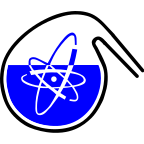Speaker
Description
Radioactive mineral waters (rich in dissolved 222Rn) are highly valued for their medical use. Therefore they have been intensively explored in last years (2005–2017) in the Lusatian and Saxothutingian units of the Bohemian Massif. Springs of radioactive medicinal water are bound up with the Cambrian/Ordovician orthogneisses and Tanvald granite of the Variscan age in the Lusatian unit and Smrčiny/Fichtelgebirge Variscan granite in the Saxothuringian unit respectively.
More than 130 water sources with activity above 1500 Bq/L (i.e. "radioactive mineral waters") were found in the whole territory. The highest radon activity reaches 13.2 kBq/L in case of the Břetislav spring in Plesná near Cheb. Waters are cold (5–9.5 °C) and low-mineralized (TDS < 200 mg/L), activities of 228U, 226Ra is generally low; 222Rn is the only important component.
The occurrence of radioactive sources is completely mysterious. In the overwhelming majority of cases, only radioactive water is present, but no solid geomaterials with increased radioactivity. The secret of activation takes place somewhere deep in the Earth. Only in two cases the active materials were found directly on the surface near the spring outflow.
The most significant 16 sources were technically captured for scientific observation and their balneological use. During the works, more than 50 samples of solid geomaterials and other samples of surrounding rocks were collected for comparison. The samples taken are mainly from the outlet channels of the spring where they were in long-term contact with running water.
Samples were examined for radionuclide content (gamma and alpha spectroscopy and alpha autoradiography) as well as mineralogical methods (optical microscopy, XRD, EM-EDA).
Although geomaterials have long-term contact with water, most of them have only low activity comparable to that of surrounding rocks. Only in rare cases have samples with elevated levels of radionuclides been found.
In these cases, a close relationship between mineralogical composition and affinity for individual radionuclides was found. While radium (226Ra) concentrates in hydrated Fe oxides (amorphous Fe oxides and goethite of varying degrees of crystallinity) and Mn hydrated oxides (birnessite and asbolane), uranium (238U) is preferentially bound to amorphous hydrated oxides of Al and Ti (so call “uranium leucoxene”).
The question was how to distinguish geomaterials from water activating and water activated. In this case, the ratio of 210Po/226Ra was used as the most appropriate indicator. Activated materials have a ratio of 210Po/226Ra greater than 1 due to radon inflows in the system. On the other hand, the water-activating materials we are looking for have a ratio of 210Po/226Ra less than 1 due to radon long-term escape. Only four samples meeting this criterion were found in the whole sample set. But only one of them was actually in contact with water in a natural situation. Nature is still guarding its secrets.

